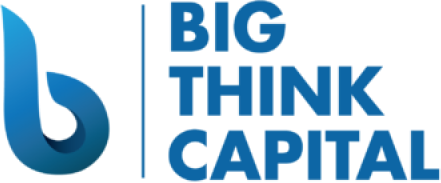Maximize Your Business Potential with the Best High Yield Savings Accounts
Estimated Reading Time: 5 minutes
- Evaluate interest rates and fees to find the best high yield savings accounts for your business.
- Use accounts as a complement to other financing options, ensuring liquidity while earning interest.
- Regularly monitor account terms and conditions to adapt to changes affecting your finances.
Table of Contents:
- Understanding High Yield Savings Accounts for Small Businesses in 2025
- Key Considerations for Choosing the Right Savings Account
- Funding Options and High Yield Savings Accounts
- Evaluating Costs, Terms, and Tradeoffs
- Implementation Checklist for Small Business Owners
- Actionable Takeaways
- Connecting to Big Think Capital
- Take Action Today
- References
Understanding High Yield Savings Accounts for Small Businesses in 2025
High yield savings accounts are savings accounts that offer higher interest rates than traditional savings accounts. This makes them an appealing option for small business owners looking to store their cash while still earning interest. In 2025, the banking landscape continues to evolve, with many financial institutions competing to offer the best rates on savings accounts. Therefore, the selection process for the right account requires careful consideration.
Key Considerations for Choosing the Right Savings Account
When evaluating which banks offer the best savings accounts, small business owners should consider the following factors:
- Interest Rates: Look for banks providing competitive rates. As of 2025, rates can vary significantly even among leading financial institutions.
- Fees: Consider any monthly maintenance fees or minimum balance requirements that could diminish your earnings.
- Access and Flexibility: Ensure the account allows easy access to funds when needed, especially for operational expenses.
- Bank Reputation and Security: Choose banks that offer strong customer service and FDIC insurance to protect your deposits.
Funding Options and High Yield Savings Accounts
Integrating a high yield savings account into your funding strategy can provide both flexibility and financial security. There are several funding options available for small businesses, and understanding how a high yield savings account fits into the mix can enhance your financial management.
How High Yield Savings Accounts Complement Other Financial Instruments
Using high yield savings accounts alongside other financing options such as working capital loans, SBA loans, and lines of credit can create a robust financial strategy. For instance, having a reserve in a high yield savings account ensures that you have liquid assets available to cover short-term operational costs or to act as a buffer in times of financial uncertainty.
Evaluating Costs, Terms, and Tradeoffs
Before opening a high yield savings account, it’s important to evaluate costs and terms carefully. Some accounts might offer attractive interest rates but come with hidden costs or limitations. Business owners should ask themselves the following questions:
- What is the annual percentage yield (APY) offered, and how does it compare to my current savings?
- Are there any penalties for withdrawal, and how do they impact my financial strategy?
- Is the account insured, and what additional protections does the bank offer?
Common Pitfalls in Managing High Yield Savings Accounts
While high yield savings accounts can be beneficial, there are common pitfalls to avoid:
- Neglecting Rate Comparisons: Regularly compare rates, as they can change based on market conditions.
- Ignoring Account Terms: Be aware of changes in account terms that could affect your savings.
- Over-Reliance on Savings: Using savings for business expenses without leveraging funding options can stifle growth.
Implementation Checklist for Small Business Owners
Here’s a step-by-step guide for integrating high yield savings accounts into your financing framework:
- Research various banks and evaluate the interest rates and terms of their savings accounts.
- Choose an account that meets your business’s liquidity needs while offering competitive returns.
- Open the account and set up automated transfers to maximize your savings potential.
- Regularly review your savings strategy and adjust your account as necessary.
Actionable Takeaways
- Evaluate the interest rates and fees of multiple banks to find the best high yield savings accounts for your business.
- Use high yield savings accounts as a complement to other financing options, ensuring liquidity while earning interest.
- Regularly monitor your account terms and conditions to adapt to any changes that could affect your business finances.
Connecting to Big Think Capital
At Big Think Capital, we understand the challenges small business owners face when navigating financing solutions. By incorporating high yield savings accounts into your financial strategy, you can better position your business for growth and stability. Our experts can assist you in exploring various funding options that align with your goals.
Take Action Today
If you’re ready to learn more about how to leverage high yield savings accounts and explore your financing options, visit Big Think Capital or speak with one of our funding experts today.
This information is educational and not legal, tax, or investment advice.
References
- FDIC Report on Financial Institutions (Federal Deposit Insurance Corporation, 2025)
- High Yield Savings Accounts Overview (Investopedia, 2025)
- High Yield Savings Accounts Guide (Bankrate, 2025)
FAQ Section
What is a high yield savings account?
A high yield savings account is a type of savings account that offers a higher interest rate than traditional savings accounts, allowing you to earn more on your deposits.
How do I find the best high yield savings accounts?
To find the best high yield savings accounts, research various banks, compare interest rates, fees, and access options, and analyze account terms carefully.
Are high yield savings accounts safe?
Yes, high yield savings accounts offered by FDIC-insured banks are generally safe as they protect your deposits up to the insured limit.






